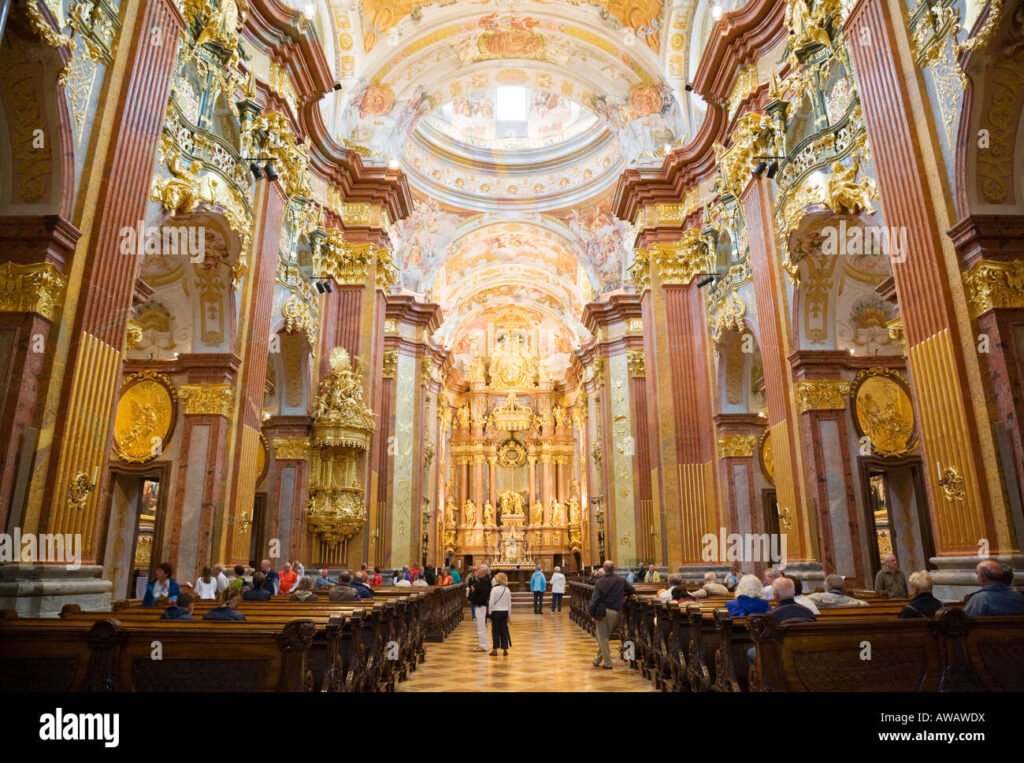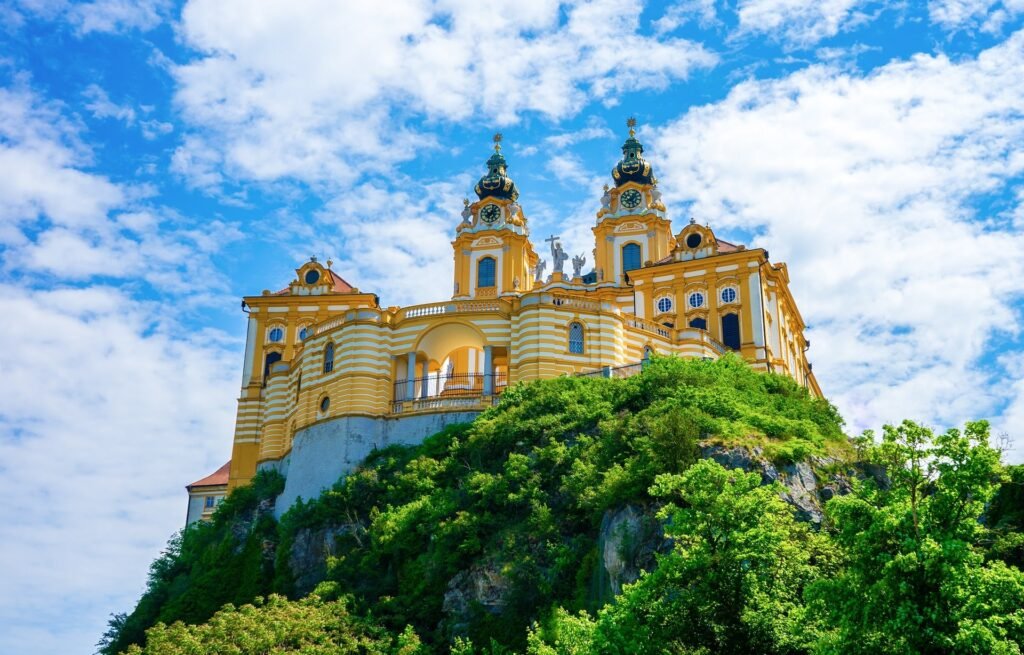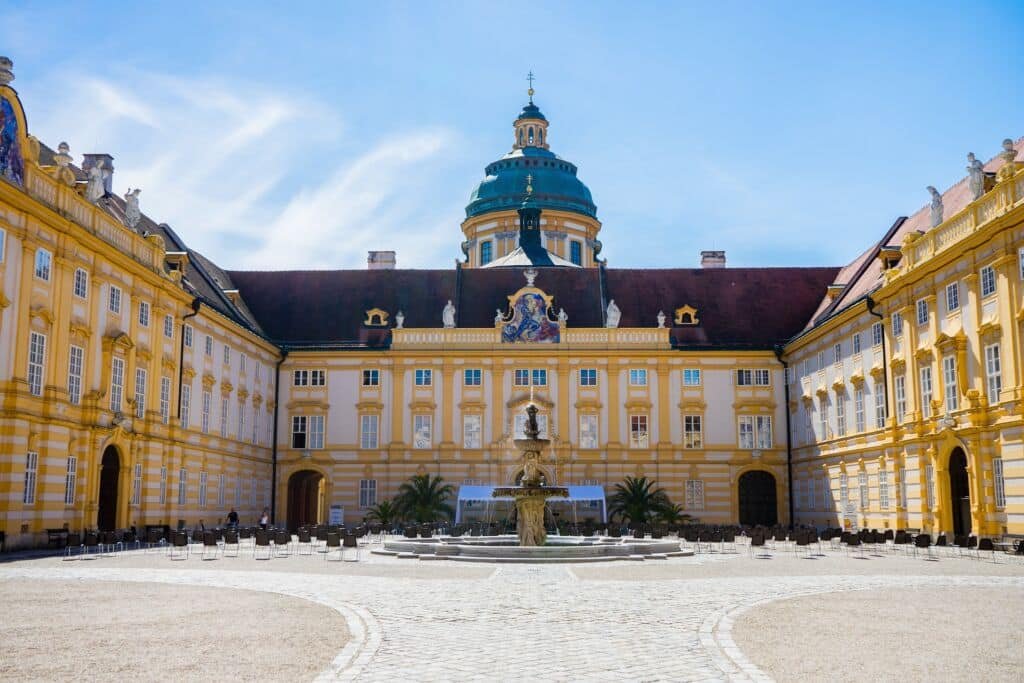Perched majestically above the Danube River in Lower Austria, Melk Abbey (Stift Melk) is one of Austria’s most iconic landmarks and a pinnacle of Baroque architecture. This Benedictine abbey is not only a spiritual center but also a cultural and historical treasure, attracting thousands of visitors every year. With its ornate interiors, expansive library, and stunning views of the Wachau Valley, Melk Abbey offers an unforgettable experience for travelers, history enthusiasts, and art lovers alike.
Historical Background
Melk Abbey has a rich history that dates back to 1089, when Leopold II, Margrave of Austria, granted one of his castles to the Benedictine monks from Lambach Abbey. Over the centuries, the abbey evolved into a center of learning, culture, and religious life in the region.
The current Baroque structure was built between 1702 and 1736, replacing the earlier medieval monastery. Architects Jakob Prandtauer and Joseph Munggenast were responsible for the abbey’s grand design, combining architectural brilliance with elaborate decorative artistry. Today, Melk Abbey stands as a symbol of the Wachau region’s cultural heritage and spiritual history.

Architectural Highlights
Melk Abbey is renowned for its Baroque elegance and grandeur. Key architectural and artistic features include:
Facade and Towers: The abbey’s twin towers and imposing white-and-yellow facade dominate the skyline, visible from across the Danube River.
Abbey Church: The interior is adorned with frescoes, gilded stucco, and ornate altars, creating a visually stunning and spiritually uplifting atmosphere.
Imperial Hall (Prälatenhof): This hall was used for important ceremonies and features intricate ceilings and decorative artwork.
Library: One of Europe’s most beautiful monastic libraries, it houses over 100,000 volumes, including ancient manuscripts, rare books, and historical documents.
Cloisters and Courtyards: Serene walkways and gardens offer peaceful views and opportunities for reflection.
The combination of intricate detailing, sweeping frescoes, and harmonious proportions makes Melk Abbey a masterpiece of Baroque architecture.
Cultural and Educational Significance
Melk Abbey has long been a center of education and culture:
Monastic Life: The Benedictine monks continue to live, pray, and work here, maintaining centuries-old traditions.
Educational Programs: The abbey offers tours, lectures, and exhibitions about its history, art, and monastic life.
Art and Music: Regular concerts and events showcase Baroque music and celebrate Austria’s rich artistic heritage.
Visitors gain insight into the abbey’s dual role as both a religious institution and a cultural landmark.
Visiting Melk Abbey
Melk Abbey is conveniently located in the heart of Melk town, easily accessible by car, train, or river cruises along the Danube.

Practical Tips:
Opening Hours: Open daily, with extended hours in summer. Check the official website for seasonal variations.
Admission: Tickets include access to the church, library, and select parts of the abbey; guided tours are available for deeper insights.
Photography: Allowed in most areas, though respectful conduct is expected inside the church.
Best Time to Visit: Spring and summer for lush gardens, clear river views, and vibrant surroundings.
Nearby Attractions
Melk Abbey is located in the Wachau Valley, a UNESCO World Heritage site, making it ideal for exploring the region:
Danube River Cruises: Scenic boat trips between Melk and Krems highlight the valley’s vineyards, castles, and charming towns.
Dürnstein: A picturesque town famous for its castle ruins and colorful streets.
Wine Tasting: The Wachau Valley is renowned for its Riesling and Grüner Veltliner wines.
Hiking and Cycling Trails: Explore the natural beauty of the valley along well-marked paths.
Conclusion
Melk Abbey is much more than a historic building; it is a living monument to Austria’s cultural, religious, and artistic heritage. From its soaring Baroque towers and breathtaking interiors to its rich library and tranquil gardens, the abbey offers visitors a journey through time, art, and spirituality. Whether you are an architecture enthusiast, a history lover, or simply seeking a serene and inspiring destination, Melk Abbey is an unforgettable highlight of the Wachau Valley and a must-visit landmark in Austria.





















